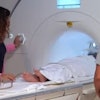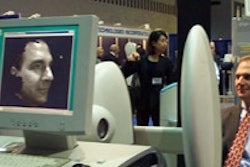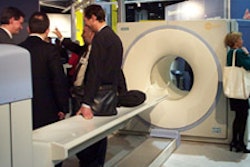CHICAGO - By incorporating computer-aided detection with standard mammography, 20% more cancers were pinpointed at the Women’s Diagnostic and Breast Health Center in Plano, TX, but the CAD system did not adversely effect recall rates or positive predictive value for biopsy.
At the RSNA meeting on Tuesday, Dr. Timothy Freer presented the results of a one-year, prospective study involving 12,860 women who underwent routine screening mammography at this community breast center.
“CAD has been a work-in-progress for many years,” Freer said. “Some issues have been raised that CAD might unduly raise recall rates and biopsy rates. We didn’t find that to be the case.”
Within the study population, 27% of the patients were getting baseline mammograms. The remaining 73% were returning and had undergone mammography in the past 13 months.
Each mammogram was processed by a CAD system (ImageChecker M1000 V2.0, R2 Technology, Los Altos, CA) and interpreted by one of two breast radiologists who were blinded to the results of the CAD analysis.
The findings were assessed based on the following criteria: detection by radiologist alone, radiologist and CAD, or CAD only with retrospective agreement by the radiologist; final BI-RADS assessment at recall; histopathology on those lesions undergoing biopsy; and the stage of each lesion proven malignant.
If lesions were found, they were classified as masses or microcalcifications. If both types of lesions were present, the more predominant finding was included, said Freer.
Of the 49 cancers detected, nine were found only by the radiologist, 32 were detected by both the radiologist and the CAD system, and eight were detected by CAD only.
The radiologists alone found 17 microcalcifications and 83 masses or areas of architectural distortion. The CAD system located 49 microcalcifications and 51 masses. In addition, CAD only found 78% or the early stage lesions, the majority of which were small clusters of microcalcifications. The radiologists alone discovered 73% of all the lesions.
“The ability of CAD to detect small clusters of microcalcifications had a profound effect on our results,” Freer said. “It’s become clear to us that the algorithm for microcalcifications is stronger than for masses.”
However, Dr. Robert Nishikawa from the University of Chicago pointed out that the radiologists may have tended to overlook microcalcifications because CAD has a high success rate for detecting those lesions.
Finally, the recall rate went up by only 1.2% to 7.7% with the addition of CAD. There also was no change in the positive predictive value for biopsy at 38%.
In response to an audience member’s question, Freer said CAD did not require any additional radiologic technologist time. Freer said the marker rate was 0.7 marks per film, for a total of 2.8 marks for a four film view per patient.
By Shalmali Pal
AuntMinnie.com staff writer
November 29, 2000
Copyright © 2000 AuntMinnie.com
Click here to view the rest of AuntMinnie’s coverage of the 2000 RSNA conference.
Click here to post your comments about this story.



















